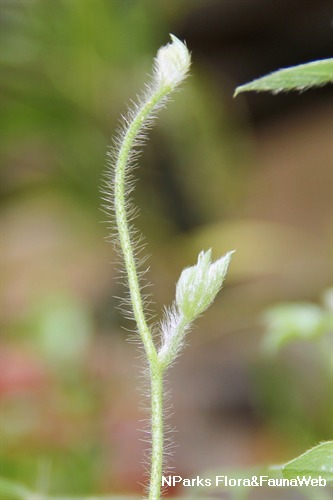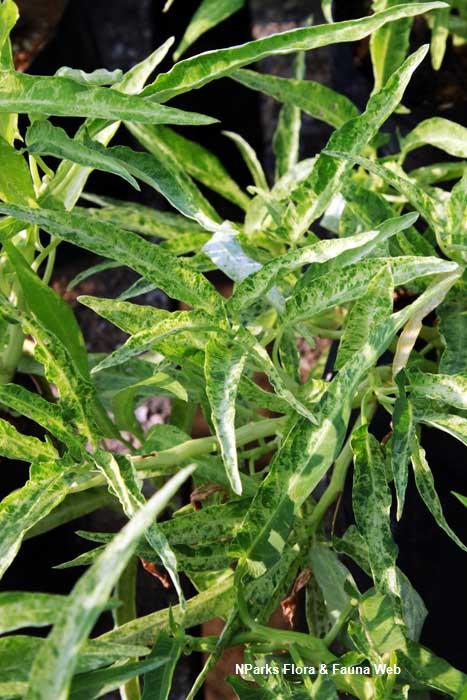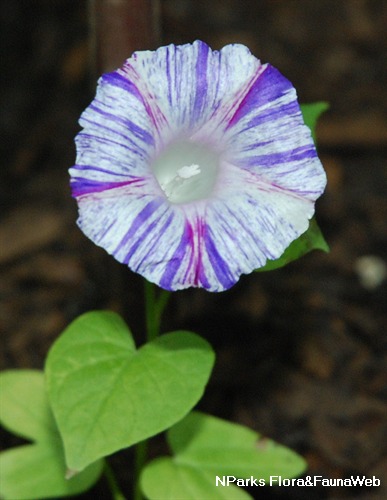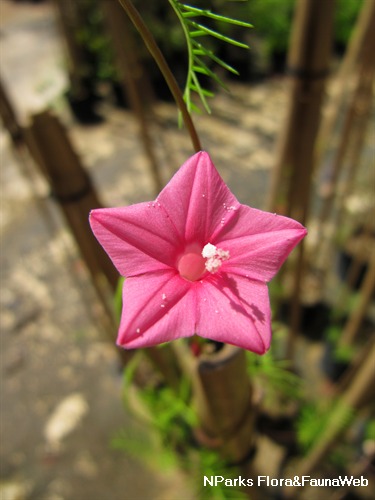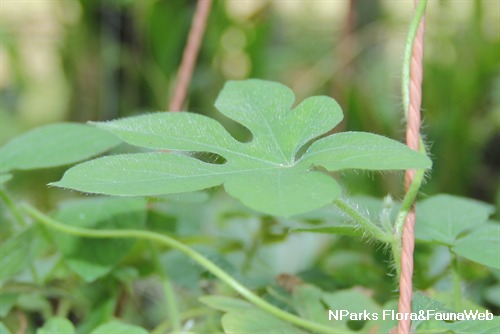
Name
Classifications and Characteristics
| Plant Division | Angiosperms (Flowering Seed Plants) |
|---|---|
| Plant Growth Form | Climber |
| Lifespan (in Singapore) | Annual |
| Mode of Nutrition | Autotrophic |
Biogeography
| Native Distribution | China, Cambodia, Indonesia, Kashmir, Malaysia, Myanmar, Nepal, New Guinea, Pakistan, Philippines, Sri Lanka, Thailand, Vietnam, Africa, Australia and the Pacific Islands. |
|---|---|
| Native Habitat | Terrestrial |
| Local Conservation Status | Native to Singapore (Critically Endangered (CR)) |
Description and Ethnobotany
| Growth Form | An annual herbaceous vine, it has a twining growth form. The surface of the plant is covered in a layer of white hairs. |
|---|---|
| Foliage | The leaves are arranged alternately along the stem. The leaf blade is palmately lobed. The leaf lobes are elliptic to oblong in shape and are tapered at both ends. |
| Flowers | The flowers are white and funnel-shaped. The corolla has mid-petaline bands covered sparsely with hairs. |
| Ethnobotanical Uses | Medicinal: The mashed leaves are used in Java, the Philippines and India and are applied on sores, boils and pimples. Others: The plant is considered as a good source of fodder in Africa. |
Landscaping Features
| Thematic Landscaping | Naturalistic Garden |
|---|
Plant Care and Propagation
| Light Preference | Full Sun |
|---|---|
| Water Preference | Moderate Water |
| Rootzone Tolerance | Well-Drained Soils |
| Propagation Method | Seed |
Floral (Angiosperm)
| Flower & Plant Sexuality | Bisexual Flowers |
| Flower Colour(s) | White |
|---|---|
| Individual Flower Shape | Funnelform / Funnel-shaped |
Image Repository
Others
| Master ID | 32067 |
|---|---|
| Species ID | 6472 |
| Flora Disclaimer | The information in this website has been compiled from reliable sources, such as reference works on medicinal plants. It is not a substitute for medical advice or treatment and NParks does not purport to provide any medical advice. Readers should always consult his/her physician before using or consuming a plant for medicinal purposes. |

